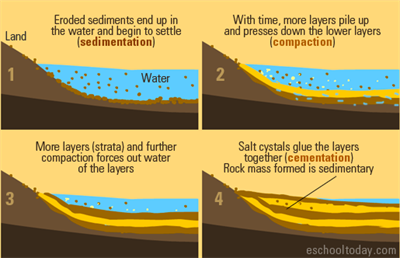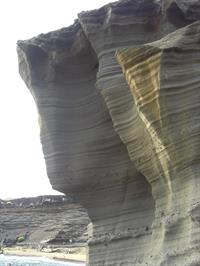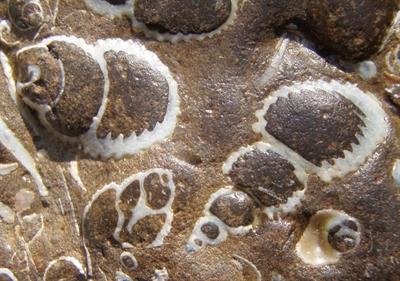
PUMPA - SMART LEARNING
எங்கள் ஆசிரியர்களுடன் 1-ஆன்-1 ஆலோசனை நேரத்தைப் பெறுங்கள். டாப்பர் ஆவதற்கு நாங்கள் பயிற்சி அளிப்போம்
Book Free DemoThe word 'sedimentary' is derived from the Latin word 'sedimentum' meaning settling down. Sedimentary rocks are formed when the weathered and eroded fragments of rocks and plants and animals' remains are deposited in water bodies. These are called Sediments.

Characteristics:
- These rocks contain fossils of plants and animals.
- They cover a large part of the globe for about 75 % of the earth surface.
- The sediments are deposited sequentially and appear as well-defined strata.
- They do not form crystals and are absorbent in nature.

Sedimentary Rocks

Fossils in Sedimentary Rocks
Types of Sedimentary rocks:
- Clastic Sedimentary rocks: The rocks disintegrated into fragments of various size due to the mechanical or physical weathering are carried and deposited by various agents such as water and wind. Glaciers from the sedimentary rocks called Clastic Sedimentary rocks. Sandstone, Shale and Clay are examples of this type of rock.
- Chemical Sedimentary rocks: When a rocks materials become soluble in the water, it precipitates and forms sediments. Such rocks are called chemical sedimentary rocks. Gypsum, iron ore, limestone are examples.
- Organic Sedimentary rocks: These rocks are formed from the deposition of plants and animal remains—for example, Coal and Chalk.
Reference:
https://eschooltoday.com/rocks/what-are-sedimentary-rocks.html
https://en.wikipedia.org/wiki/Sedimentary_rock
https://en.wikipedia.org/wiki/Organic-rich_sedimentary_rocks